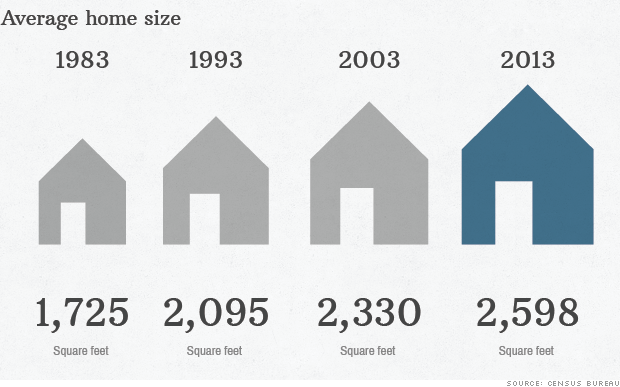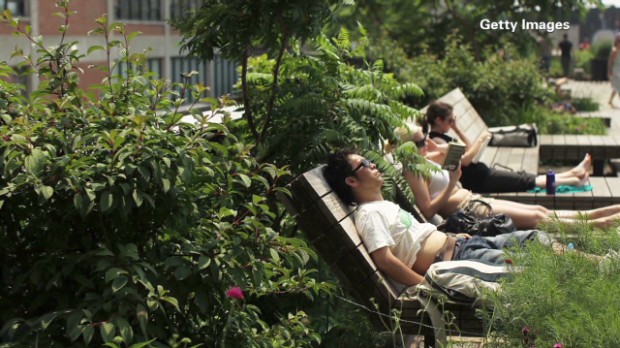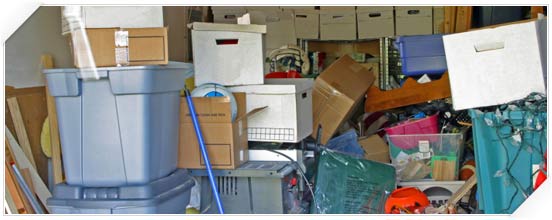10 kid-safe home tips to help mom worry less
By Scot Meyer of SwitchYard Media
The
typical house can be a dangerous place for small children.
Child-advocacy group Safe Kids USA says that every year, an average of
2,096 children in the United States die from injuries suffered at home.
The
good news: That average has declined for the past 20 years, the
organization says, and that trend can continue if parents take some
simple precautions.
Here are 10 trouble spots to be aware of and tips for making sure home sweet home is also a home safe home.
1. Install a window guard

© Scot Meyer
Each
year, falls from windows kill 12 children younger than 10 years old and
injure an additional 4,000, Safe Kids USA says. These falls are most
common in big-city apartment buildings, but the American Academy of
Pediatrics'
Healthy Children website recommends that parents install guards on all windows above the first floor in suburban houses, as well.
"You
also need to think about which window in each room you would use as an
emergency exit in case of fire, and make sure whatever device you use on
that window has a quick-release mechanism," says Meri-K Appy, president
of Safe Kids USA.
Safe Kids USA says that fatal window falls
declined by 35% in New York after the city passed a law requiring guards
in windows of all apartments with children 10 or younger.
2. Add a gate to your stairwell

Photo courtesy of Baby Bodyguards
The
American Academy of Pediatrics recommends that parents install stairway
gates to prevent falls. Appy says parents should place them at the top
and bottom of the stairs.
Each year, about 103 U.S. children die
from falls, and more than 2.3 million fall-related injuries are
reported, Safe Kids USA says.
In addition to falling down stairs,
infants are at risk from falls from furniture and from baby walkers,
which the pediatrics academy recommends that parents not use.
3. Lock ovens and kitchen drawers

Photo courtesy of Dorel Juvenile Group
Parents
can install special locks and knob covers that are designed to keep
toddlers from opening the oven, turning it on or activating burners on
the stove.
Most kitchen drawers and cabinets also should be
secured, says Frederick Ilarraza, co-founder and president of New York
baby-proofing firm
Baby Bodyguards.
It's OK for parents leave one drawer — far from the stove — unlatched
for a child to explore, however, he says. This drawer can contain
kid-friendly items, including plastic containers and plastic and wooden
utensils.
"But you shouldn't allow (children) to play with pots
and pans, because they won't differentiate between the pot they are
allowed to play with and the one on the stove with steam coming out of
it," Ilarraza says.
4. Turn down the heat

© Serenethos
The
most common burn injuries for children younger than 4 come from hot
liquid or steam, Safe Kids USA says. Although most scald burns are from
hot foods and liquids spilled in the kitchen, hot tap water accounts for
about 25% of scald burns and causes more hospitalizations and deaths
than other liquid burns.
To prevent scalding in the kitchen and
bathroom, parents can set the thermostat on their water heater to 120
degrees. Those who want an extra level of safety, or who don't have
access to their building's water heater, can install special faucets and
shower heads that shut down the flow when the water gets too hot.
"Young
children's skin is thinner than adult skin," Appy says. "What might
just feel uncomfortably hot to us can badly burn a child."
5. Ensure your smoke alarm works

© Lasse Kristensen
Every
bedroom should have a smoke alarm, as should any common area within 10
feet of the kitchen. Each floor of your home also should have a
carbon-monoxide detector.
The National Fire Protection Association
says that about 3,000 people die in the U.S. each year because of
fires, and children younger than 5 are 1.5 times more likely to die in a
home fire.
The association's research shows that nearly
two-thirds of home-fire deaths were in residences with no working smoke
alarms. Data from 2009 show when a smoke alarm was present during a home
fire but did not go off, the failure was because of a dead or
discharged battery 22% of the time, and the battery was missing or
disconnected 53% of the time.
6. Tie down bookcases

© Scot Meyer
Small children like to grab and climb, and those instincts make large pieces of furniture and other heavy objects dangerous.
"File
cabinets have a mechanism that prevents more than one drawer from being
opened at a time, but dressers and changing tables do not," Ilarraza
says. "Bookcases can seem secure and are, so long as they are
bottom-heavy. But once a toddler removes the bottom two shelves of (its)
books, the piece becomes top-heavy and easily toppled."
To
prevent toppling, parents can buy straps to hook bookcases, television
stands and dressers to the wall. These are available where other
child-proofing products are sold.
It's also wise for parents to
put heavier items on lower shelves or place safe items in which children
are interested on the bottom, so kids won't be tempted to climb.
7. Install bumpers on sharp edges

© Scot Meyer
The
American Academy of Pediatrics recommends removing sharp-edged or hard
furniture from rooms where children play and installing bumpers on
coffee tables and other hard edges throughout the house.
Ilarraza
says that corners are especially dangerous because they can create
puncture injuries. "Toddlers seem to have strong magnets in their
foreheads that attract coffee-table corners," he says.
Soft foam corner protectors cost a few dollars.
8. Keep kids away from water

© Darren Epstein
Unintentional
drowning was the leading cause of injury-related death for children
ages 1 to 4 in 2007 and the No. 3 cause for children ages 5 to 9, the
National Center for Health Statistics says. The Centers for Disease
Control and Prevention also says that more than 20% of the 3,443
drowning victims that year were 14 or younger.
Children can drown
in less than 2 inches of water, the American Academy of Pediatrics says.
Thus, bathrooms should be off-limits to unattended young children, who
can drown in bathtubs, toilets and even in pails of water.
Parents
also should surround their swimming pool with a fence that is at least 4
feet high on all sides and that has self-latching gates.
9. Place cords out of reach

© mypokcik; Stephen Coburn
Young
children are at risk for strangulation and suffocation around the
house, says the American Academy of Pediatrics, which urges parents to
place baby cribs away from windows.
Cordless window treatments are
a good idea, the academy says. If that is not possible, shade cords
should be tied high and out of reach and not knotted together.
Electrical
cords can be hazardous, too. Baby Bodyguards says that while many
people realize the dangers of cords that dangle near a crib, they think
nothing of putting plug-in baby monitors near or inside the crib. "They
work just as well and often better from the other side of the room,
where your child can't reach the cord from the crib," Ilarraza says.
10. Cover electrical outlets

Photo courtesy of SafetyCaps, www.safetycaps.com
Young children love to poke and prod, so it's a good idea to cover all electrical outlets to reduce the risk of shock.
"Most
parents know to place caps in electrical sockets," Ilarraza says.
"Unfortunately, many of the socket caps on the market today are the size
of a quarter (and are) a choking hazard.
Ilarraza says he
recommends a product called SafetyCaps, which are larger, so children
cannot get them lodged in their throat. The caps also have holes to
allow air to pass.
Surge-protector covers also are available.




















































